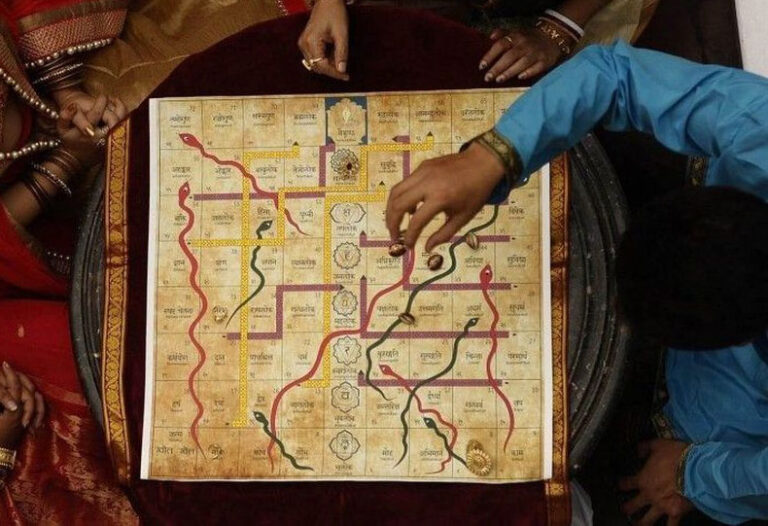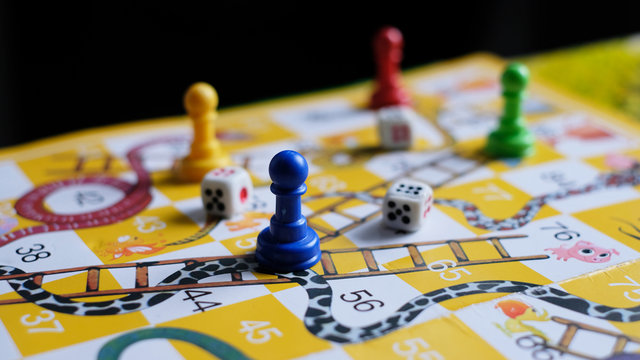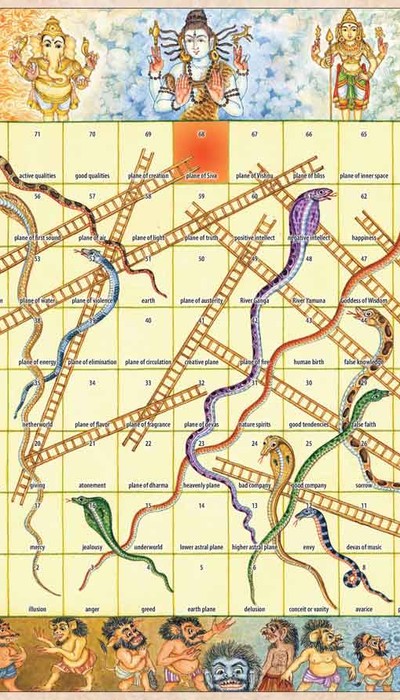Gyan Chaupar
The globally popular game of Snake and Ladders finds its historical roots in the ancient Indian game of Gyan Chaupar or Moksha Patamu. Originally named Moksha Patamu, this game was deeply entrenched in moral principles, teaching cause and effect, values, and virtues. It served as a unique method of moral instruction for children, without the need for conventional books or lectures.

Image Source : Scroll.in
Some historians attribute the creation of this game to Saint Gyandev in the 13th century AD, while others suggest its existence as early as the 2nd century AD. The game, initially designed as Gyan Chaupar, featured a board of 72 boxes, with squares numbered 24, 44, and 55 representing vices like bad company, false knowledge, and ego, respectively. Each vice, depicted as the snakes’ heads, had corresponding effects emphasising the Hindu principle of karma or cause and effect.
The modified version of the game, now known as Snakes and Ladders, emerged in the late 19th century when India’s colonial rulers introduced it to Great Britain. While maintaining the original gameplay, the morality lesson embedded in Gyan Chaupar was somewhat obscured. Notably, the number of snakes and ladders became equal, diverging from the older version where snakes outnumbered ladders. This symbolic change reflected the belief that succumbing to vice is easier than upholding virtue.

Image Source : Google
In the modified version, the virtues of purification, true faith, and conscience were contained in squares numbered 10, 28, and 46, leading to the heavenly plane, the plane of truth, and happiness, respectively. The ultimate goal in this version was to reach box number 68, symbolising the plane of Shiva.

Image Source : homegrown.co.in
Snake and Ladders, with its rich history and amalgamation of entertainment, morality, and religious aspects, became a worldwide classic loved by both children and adults. Alongside Ludo, it stands as a testament to the enduring popularity of traditional dice board games, providing both amusement and valuable life lessons.
